A Ruined Kasbah & A Dry Riverbed - On the Catastrophic Edge of Skoura's Lush Oasis
Hello, and welcome back as I explore a lush palm oasis nestled in Southern Morocco’s vast sea of rock and sand, stumbling upon the ruins of a forgotten kasbah (fortress).

After wandering through the main building, I came to a hole in the wall. Outside, I can see a hill with a few more structures at the top.

We head up the hill, over and around mounds of dried clay, and I wonder how much of this hill was actually just collapsed ruins, which had been weathered down to bumps on the path by years of erosion. At the top, we find a few smaller ruined buildings, which are in much worse shape than the main building I just left.

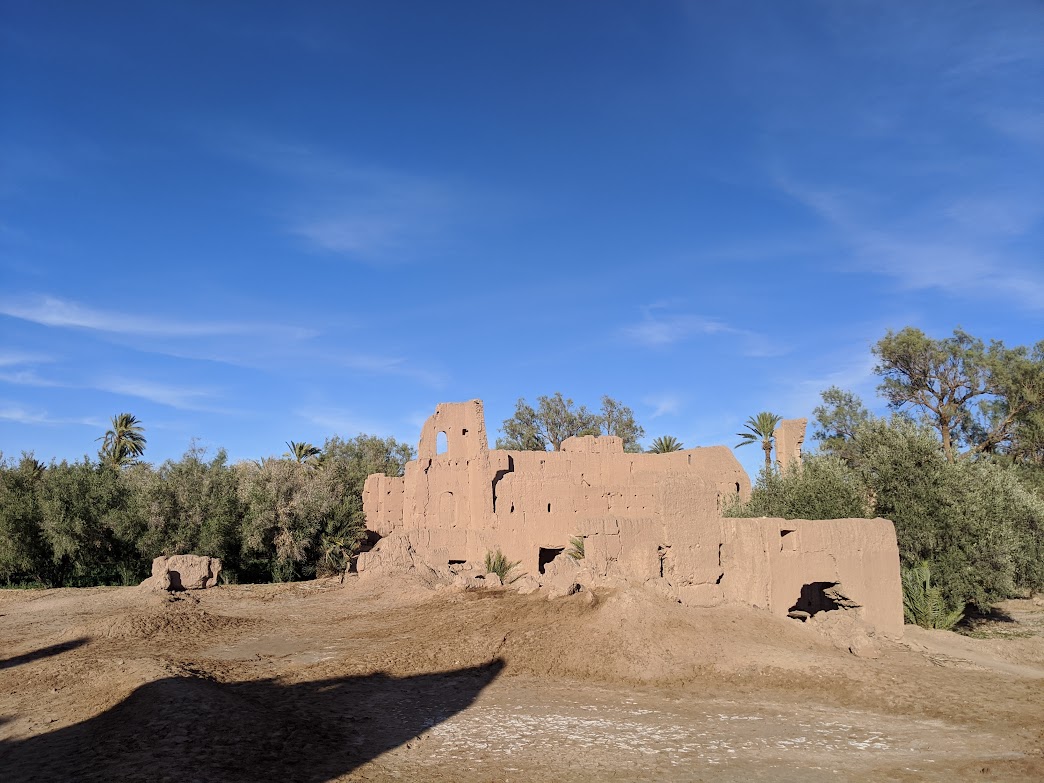

I wander into the largest of them, which still has part of the second and third stories intact.
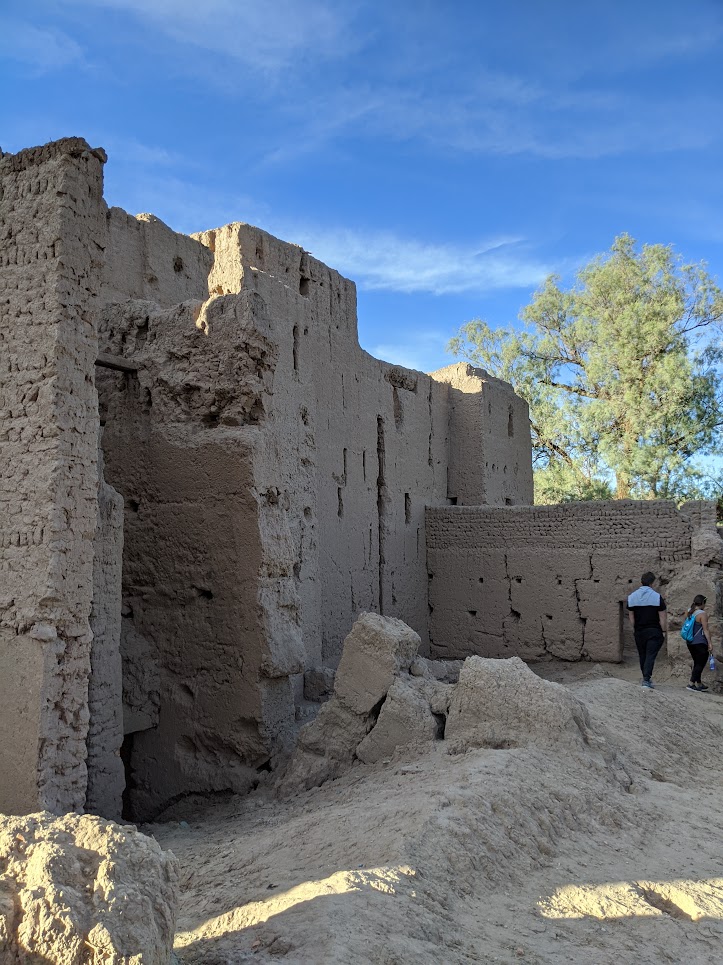
When coming to the staircase it is clear that this building had experienced some heavy water erosion, much more so than the other building.
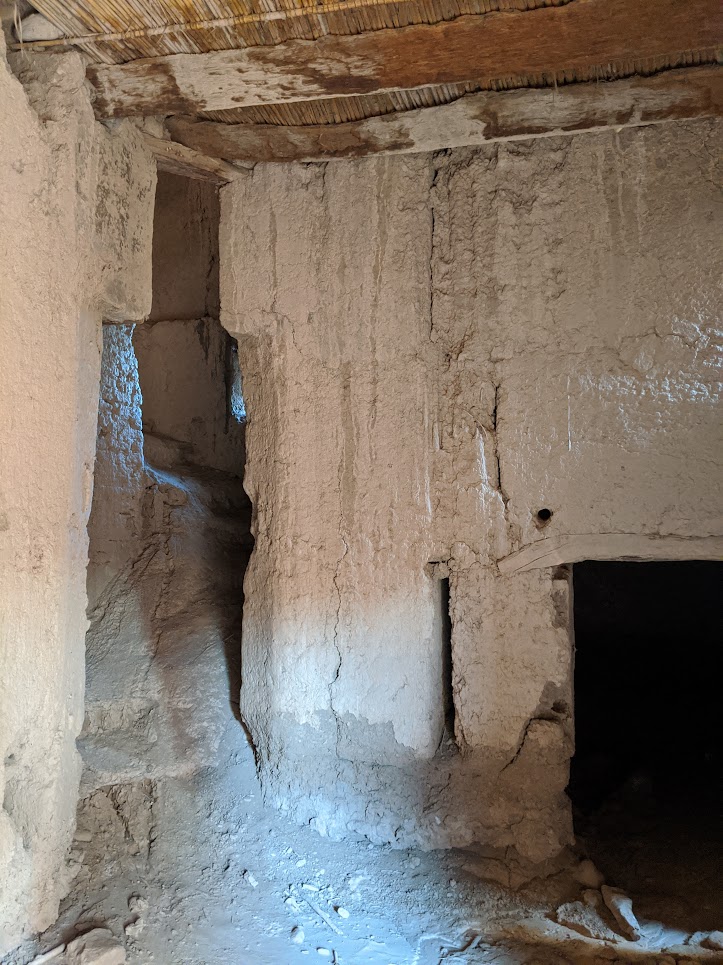
I am able to climb up the washed away staircase to the second story.
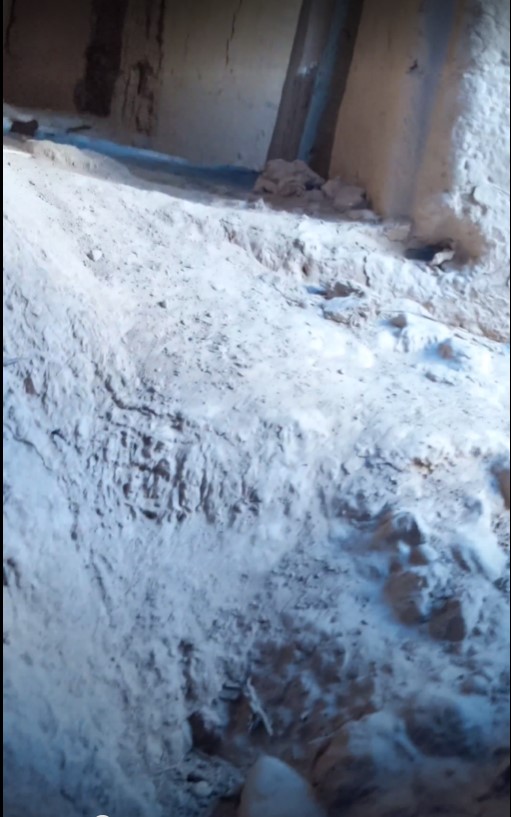
I am surprised by just how stable the second story still seems, with much of the wooden structure solidly still in place.
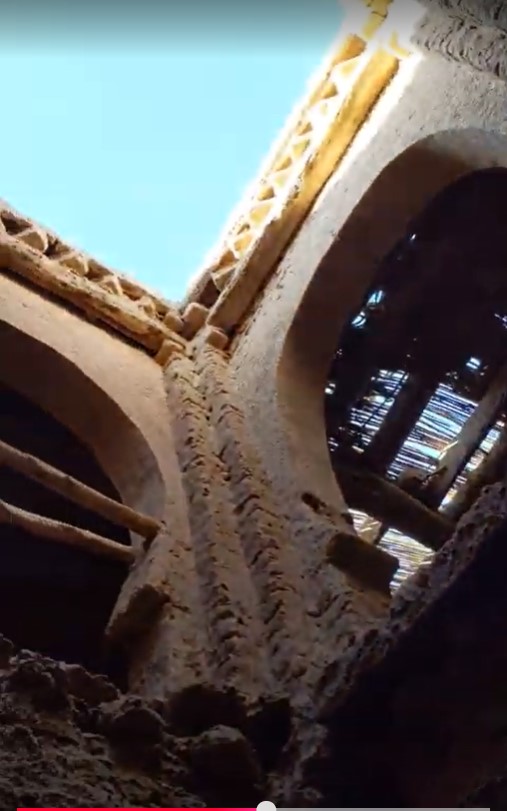
When I get up to the third floor, the ground seems a lot less reliable, so I do not venture far from the stairs.
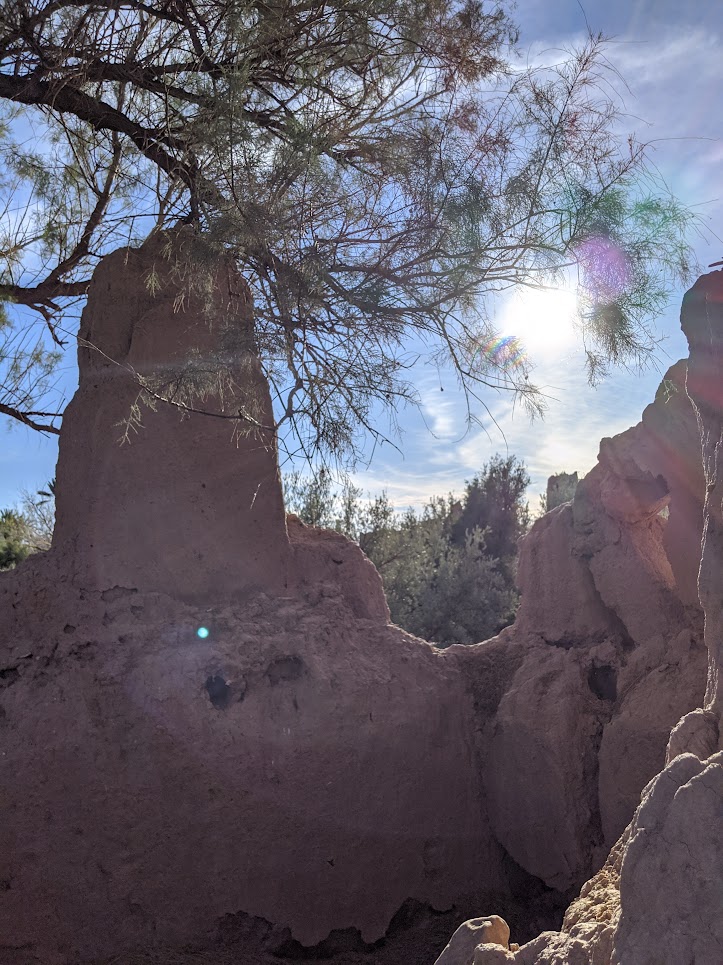
I started to notice that much of the wooden beams that would have been in place throughout the other smaller structure were missing. My guess is that they were taken away to be used in other buildings some time after the structures were abandoned. The main buildings still had many of these wood pillars in place, which is why much of it was still accessible, and not as devastated as these smaller buildings.
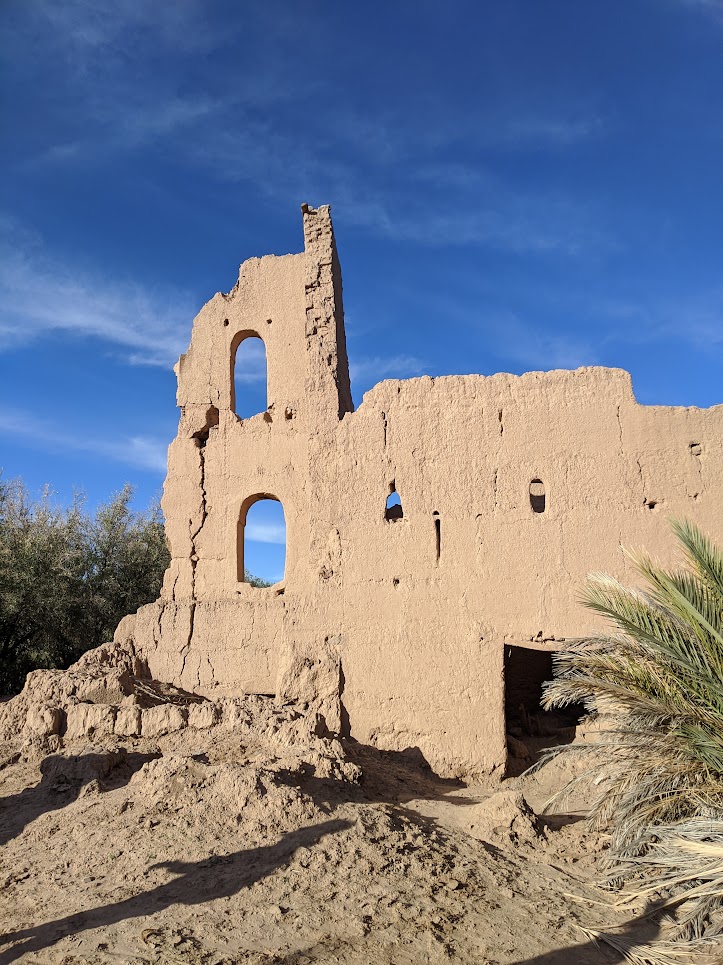
Coming out of a breach in the wall, I found something which I was not expecting.
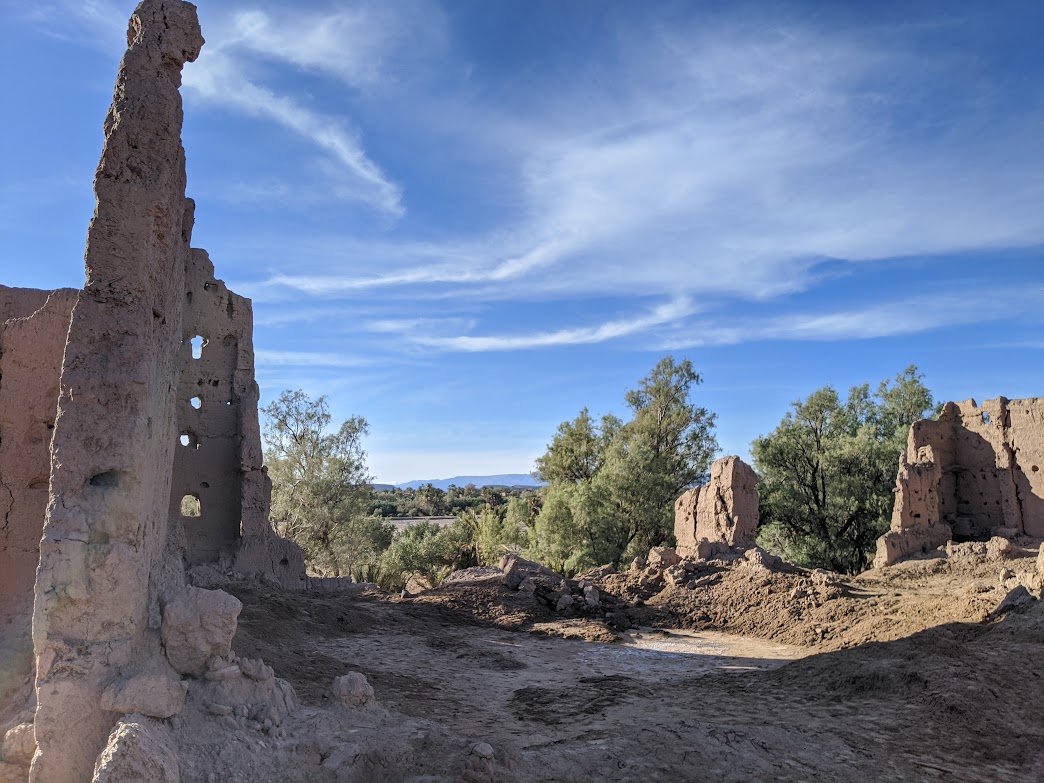
Just beyond the ruins, just a few meters back downhill was an opening which overlooked what appeared to be a large dry riverbed.
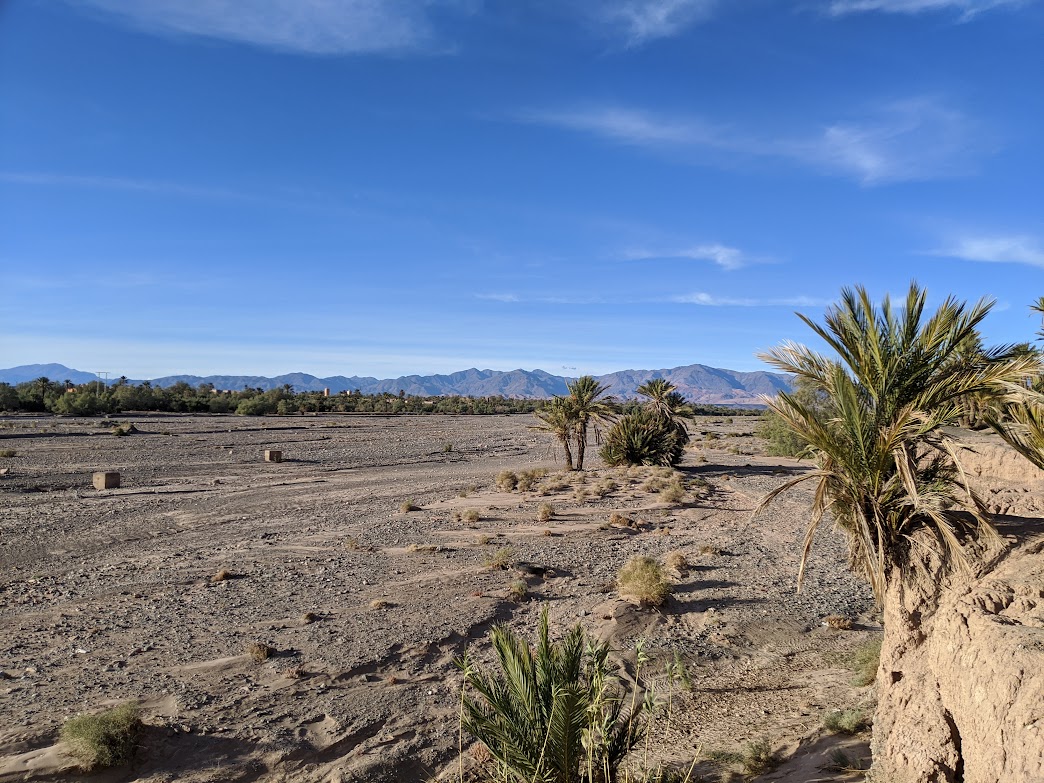
We sit and rest here for a little while and gaze out across the vast open space. I think the view is quite beautiful with the mountains to one side, and some epic sky views on the other.
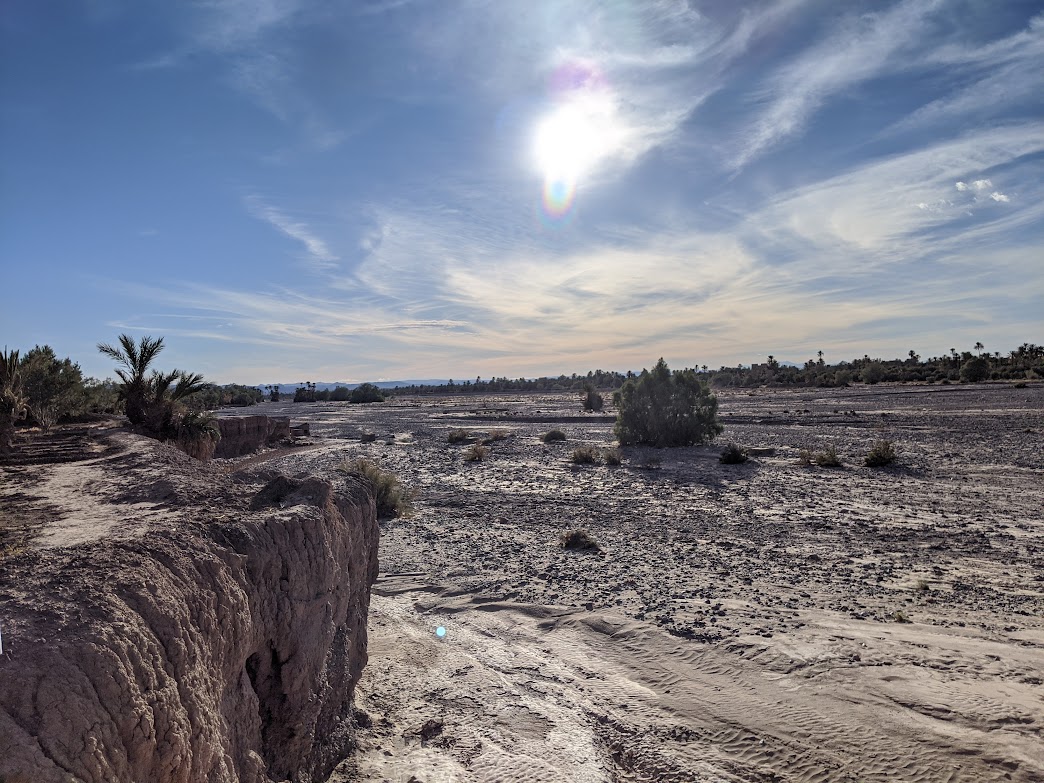
Looking at the map, I can see that the oasis picks back up again at the other side of the dry river bed. I imagine there must have been a great flood that swept through this place long ago, which cut violently through the oasis.
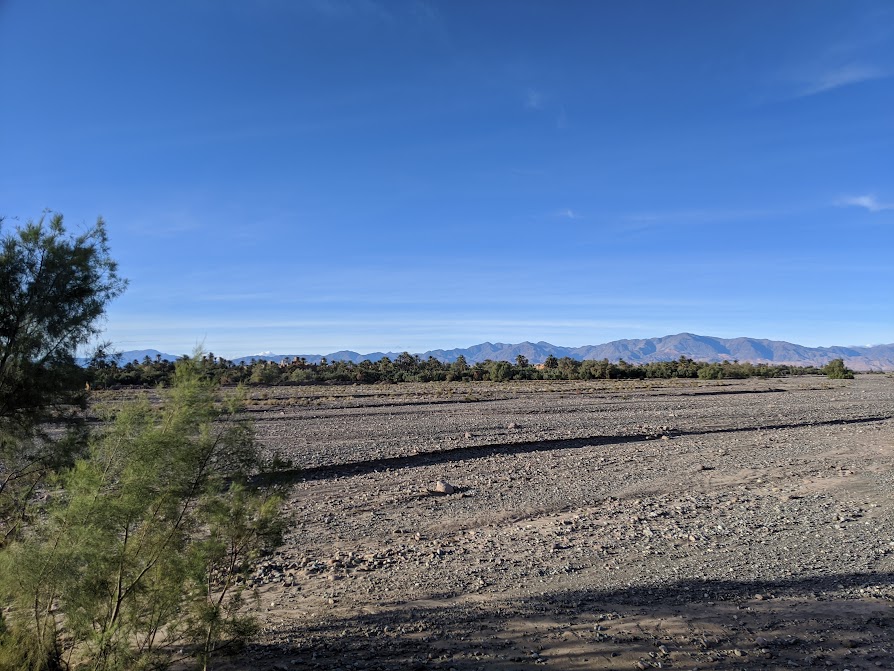
Looking back at the ruined kasbah, I can't help but imagine that perhaps this large fortified home played some defensive role, as it seemed to occupy a strategic position overlooking the river.
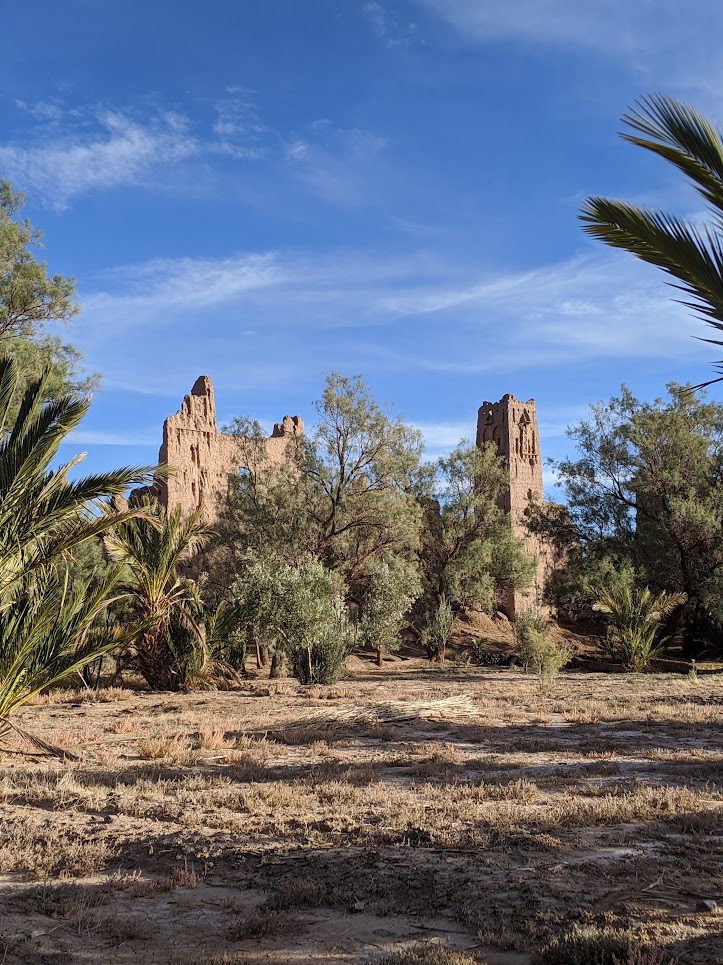
My curiosity is piqued by the small clay box-structures scattered across the river bed.

As I get closer to one, it is clear they are furnaces, which have been abandoned long ago. Seeing the furnace up close makes me feel a little sad, as I imagine each ruined furnace was probably once surrounded by someone's home. Homes which have clearly all been swept away in a flood. I wonder if the people here had time to escape, and how quickly the flooding came. Walking along the dry riverbed, amongst these ruins, I am reminded of just how insignificant we all are in the face of mother nature’s great power and fury.
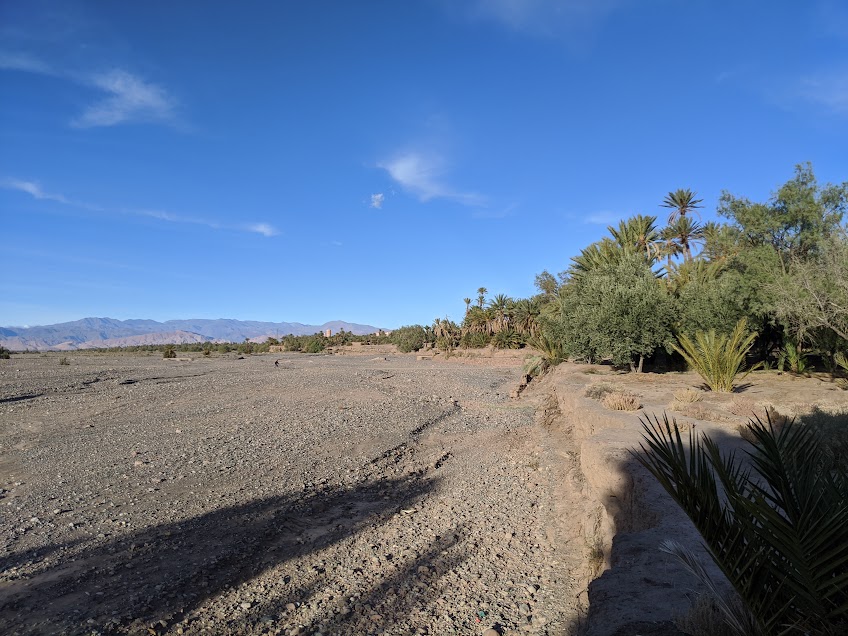
I hope you enjoyed reading about my experience exploring these ruins, and discovering the dry riverbed. Please consider joining me for my next post in Skoura, where I follow the dry river to another part of the oasis, which is home to the best preserved kasbah in Morocco.
If you would like to read more about my adventures along Morocco’s Route of 1,000 Kasbahs, please consider checking out some of my previous posts, including:
Exploring A Rare Desert Palm Oasis & Discovering A Ruined Kasbah, which can be found here.
Abandoned On the Route of 1,000 Kasbahs - A Journey to Skoura, which can be found here.
All photos were taken by me. Have a great day!
You can check out this post and your own profile on the map. Be part of the Worldmappin Community and join our Discord Channel to get in touch with other travelers, ask questions or just be updated on our latest features.
Congratulations @giathebao! You have completed the following achievement on the Hive blockchain And have been rewarded with New badge(s)
Your next target is to reach 100 upvotes.
You can view your badges on your board and compare yourself to others in the Ranking
If you no longer want to receive notifications, reply to this comment with the word
STOPCheck out our last posts:
I don't think they are worth much yet, but I am glad to show my support to all of the great creators on Hive! :)
It is such a captivating journey. The contrast between the lush oasis and the crumbling Kaasbah tells a powerful story of time, resilience and nature’s quiet beauty. For me, these ruins are the most attractive things in this modern era full of technological and artificial stuff. Very well written and captured 👏👏👏
Thank you for your kind words, I am glad you appreciated my post. The ruins we find in the world are like puzzle pieces to a great story we are all a part of, and which tease our imagination. Nature often plays a significant role in these stories, and its power is often painted across our landscapes with little regard for humans. The clash between nature and society is always fascinating to witness, and it is rare to find something so beautiful and thought-provoking produced in our modern world.
Wow, what an interesting picture my friend.
Thank you, I am glad you appreciated it.
!discovery shots
!PIZZA
Thank you for the support @jlinaresp!
This post was shared and voted inside the discord by the curators team of Discovery-it in collaboration with Visual Shots community.
Discovery-it is also a Witness, vote for us here
Delegate to us for passive income. Check our 80% fee-back Program
I hope your community enjoys my post! :)
$PIZZA slices delivered:
@jlinaresp(12/15) tipped @giathebao
Come get MOONed!
It's a shame the kasbah was destroyed, the building actually looks very attractive and the atmosphere next to it looks very bright the view looks amazing I really like it my friend ❤️
I completely agree. The area was really beautiful, and the large kasbah would have had a nice scenic location next to the river. Luckily, there were other kasbahs in the area that had not been destroyed. Thank you for stopping by!
The contrast between the lush oasis and the skeletal remains of the kasbah paints a powerful picture of time, loss, and resilience. It’s incredible that places like this can stir such deep reflection.
It really is fascinating to see what is left behind after time and nature have had their way. I think people always assume that what we have and see now will remain, when in reality nothing is permanent. This place is also really quiet, especially inside the structures, which certainly lends to the reflective nature of the place.
Totally! That quiet makes the place feel almost timeless. It’s a good reminder that everything changes and nothing stays the same forever.
Hiya, @ybanezkim26 here, just swinging by to let you know that this post made it into our Honorable Mentions in Travel Digest #2576.
Your post has been manually curated by the @worldmappin team. If you like what we're doing, please drop by to check out all the rest of today's great posts and consider supporting other authors like yourself and us so we can keep the project going!
Become part of our travel community:
Hi @ybanezkim26, I am glad you appreciated my post. Thank you for your support!
You are very welcome @giathebao! it was well deserved. ☀️
Keep up the great work 💪
That would be a good place to play Hide and Seek
Yup, 100%! I actually jumped out of one of the dark rooms and scared my friend while we were there haha
Very interesting and it does get you thinking how bad the flood was and how long it lasted. It must have been bad enough to abandon the site and move elsewhere. They must get some rain there with all the palm trees or the ground water is not that deep.
I later talked with the man who owned the guesthouse, he said that around late autumn and early spring they can get heavy rains in the High Atlas Mountains nearby. Since the dry riverbed soil is already very compacted, the water does not soak in, but instead quickly runs off and causes flash floods. On the bright side, when it is not out of control, the runoff from the mountains is often diverted for irrigation, as well as collected in shallow aquafers, which keep the area lush year-round.